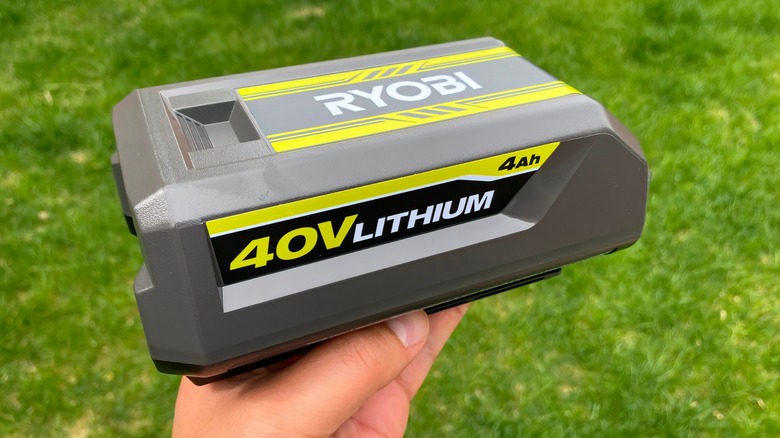Why You Should Reconsider Refurbishing Your Ryobi Battery
When your Ryobi power tool stops holding a charge, what do you do? You could buy a new one — that's the safer but more expensive option. Or you could go down the DIY route. After all, the internet is packed with so many guides and tutorials on how to bring a dead battery pack back to life. These videos make the process look simple. All you have to do is open the case, replace the old cells, and put the pack back together. Your battery is as good as new, and you've managed to save some money. But batteries are actually complicated.
There are many reasons why you should reconsider refurbishing your Ryobi battery at home. If you make a mistake, it could be dangerous, such as blowing up the tools you use with your Ryobi batteries, or worse, starting a fire. That automatically separates this process from most other home improvement projects where you could undo a mistake by simply starting over. Here, mistakes could seriously injure you or even destroy your property. This is why it's safer to have an expert do it instead.
The risks you should know about refurbishing Ryobi batteries
On a list of DIY projects you should avoid at all costs, refurbishing a Ryobi battery is definitely at the top. That's because the lithium-ion cells inside these packs can be pretty volatile, and as such must be handled with care and precision. If you're not skilled, you may expose yourself to serious injuries, and this is something many online tutorials conveniently gloss over. Refurbishing batteries requires expert soldering skills and a deep understanding of cell technology. One weak connection or a poorly executed weld can trigger a short circuit that destroys the entire pack. In the process of refurbishing, if there's some mishandling and these battery cells react violently, they could leak corrosive acid, explode, or start a fire within seconds.
Another major aspect many people overlook is the compatibility of the replacement parts. Ryobi's original batteries use cells with specific charge and discharge rates designed to handle the power demands of their tools. If you install cheaper, lower-grade replacement parts, that's a recipe for these batteries to rupture, leak harmful chemicals, or even ignite during charging or while powering tools.
While most DIY projects are a fun challenge that we'd usually encourage you to take on, this is one instance where we'd advise you to prioritise safety. Of course, the best hack is to take proper care to ensure the longevity of your Ryobi tool batteries. However, when they do go bad, spend on a new battery with warranty protection. That way, you'll save yourself the stress and possibility of a dangerous accident.

